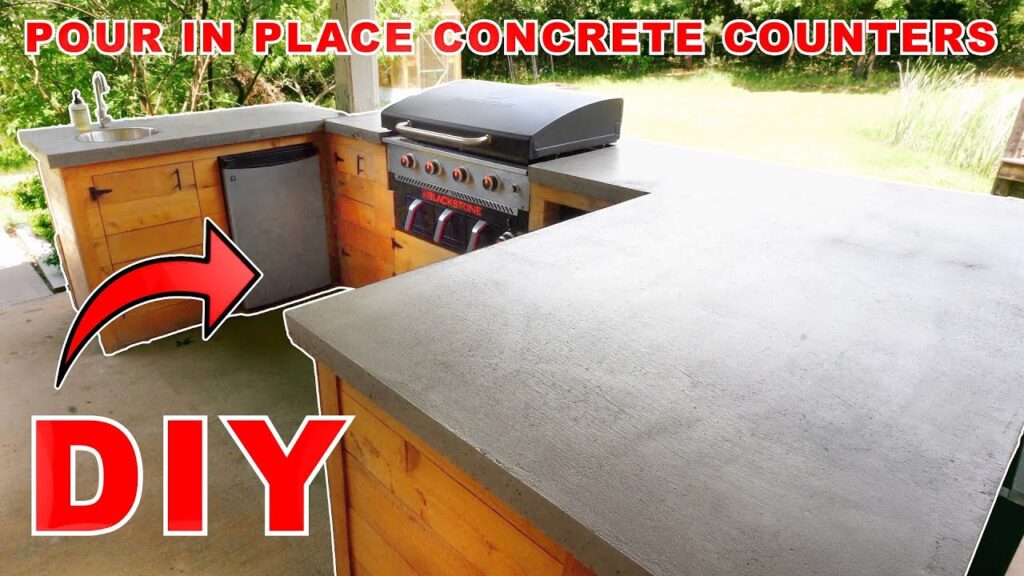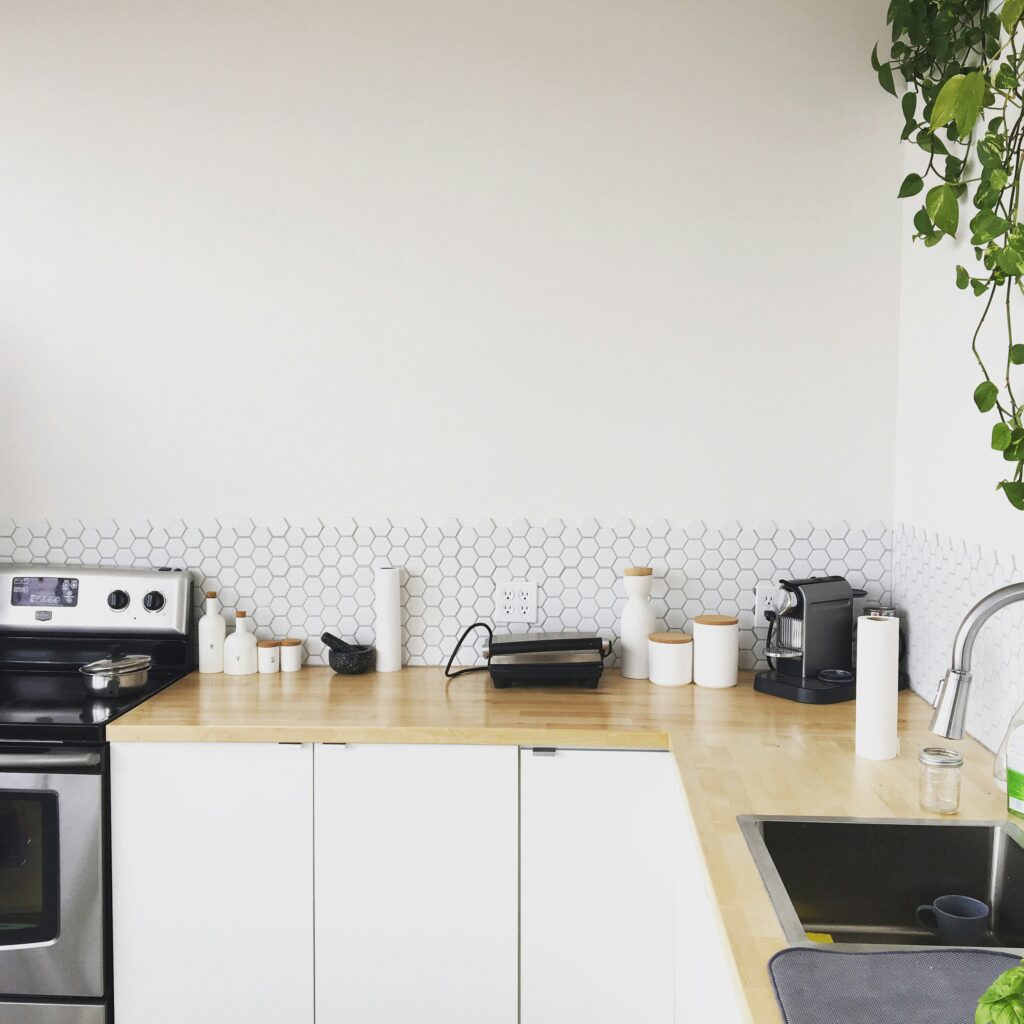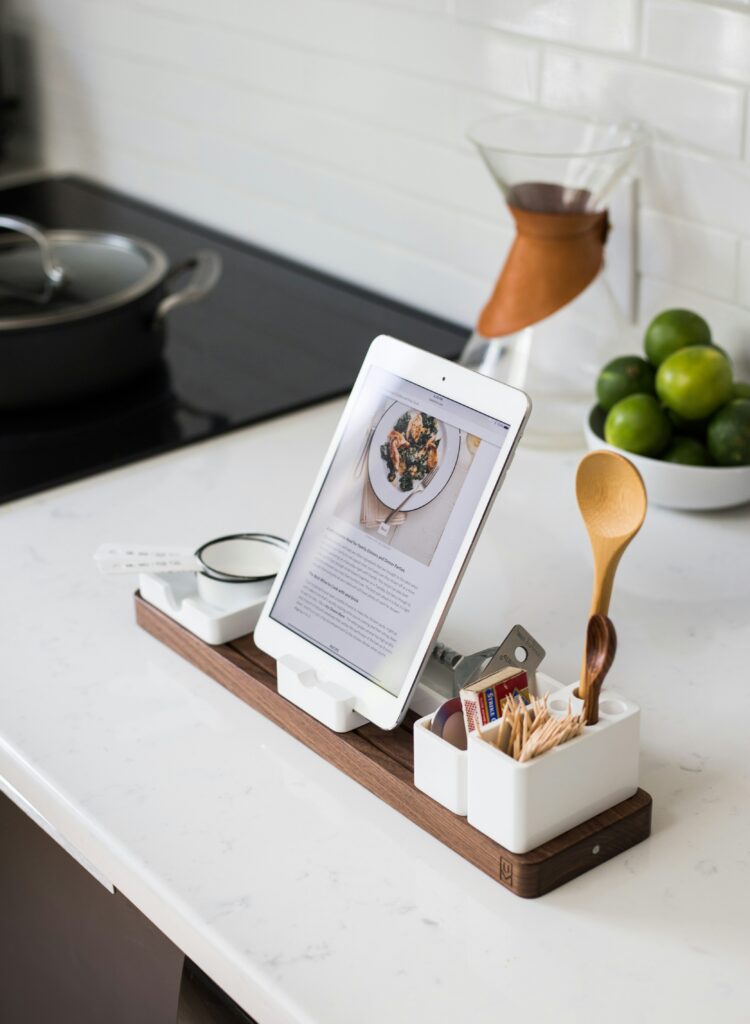In this informative video titled “DIY Concrete Countertops | Outdoor Kitchen Update | Modern Builds,” the creator shares their experience with DIY concrete countertops for an outdoor kitchen. The original skim coated concrete countertops did not withstand the swelling and shrinking of the door substrate, resulting in cracks and failure after two years. The video showcases the installation process of the new concrete countertops, highlighting the valuable lessons learned in the process. The creator also mentions the materials and supplies needed for installing concrete counters and expresses gratitude for watching the video, ending with social media links for further connection. Additionally, the content discusses the process of building a DIY outdoor kitchen, including the mistake of using skim coat concrete countertops on particle board doors, which led to swelling, shrinking, and cracking. The author rectifies their errors by tearing out the failed countertop and replacing it with DIY pour-in-place concrete counters. Furthermore, the author upgrades the grill and shares details about the construction process, such as using three-quarter inch radiator pine plywood for the countertop base, creating an opening for the grill insert, and using a DIY insulation kit for the sink. They also mention the use of melamine forms, rebar for structural integrity, Quikrete crack-resistant mix, and applying water-based polyurethane and silicone caulk for finishing touches. The author expresses satisfaction with the results and the upgraded grill, while also highlighting the lessons they learned from this project.

DIY Concrete Countertops
Overview of DIY Concrete Countertops
In this article, we will discuss the process of building DIY concrete countertops for an outdoor kitchen. The original skim coated concrete countertops installed by the author only lasted about 2 years before they started cracking and failing due to the swelling and shrinking of the door substrate. The author then decided to tear out the failed countertops and replace them with DIY pour-in-place concrete counters. The outdoor kitchen project also includes upgrading the grill to a 36-inch wide Blackstone flat top grill. Throughout the article, the author shares the mistakes made during the initial construction and the lessons learned from them.
Benefits of DIY Concrete Countertops
Before we dive into the installation process, let’s take a moment to discuss the benefits of DIY concrete countertops. Concrete countertops offer a unique and modern look to any kitchen. They can be customized in terms of color, shape, and texture, allowing you to create a one-of-a-kind design. Concrete is also a durable and long-lasting material, making it a great choice for outdoor kitchens. By opting for a DIY approach, you have the opportunity to save money and create a custom countertop that fits your exact needs and preferences.
Outdoor Kitchen Update
Initial Construction Mistakes
During the initial construction of the outdoor kitchen, the author made some mistakes that resulted in the failure of the skim coated concrete countertops. One major mistake was using skim coat concrete countertops on particle board doors. Over time, the doors swelled and shrank due to moisture, humidity, and heat, which caused the concrete to crack. This mistake led the author to realize the importance of using the right materials and techniques for the project.
Upgrading the Grill
As part of the outdoor kitchen update, the author decided to upgrade the grill to a 36-inch wide Blackstone flat top grill. This upgrade required opening up the space and reinforcing the area to accommodate the new grill. The author used metal blocks to support the weight of the grill, instead of using the original metal stand. This upgrade not only improved the functionality of the outdoor kitchen but also added a sleek and modern look to the space.
Building the Countertop Base
To create a solid foundation for the concrete countertops, the author used three-quarter inch radiator pine plywood for the base. The plywood was cut to size and attached to the frame using a 16 gauge finish nailer. The author also cut an opening for the grill insert, ensuring a proper fit. The base provided a stable and level surface for the concrete countertops to be poured on.

Materials and Supplies
List of Materials
To install DIY concrete countertops, you will need the following materials:
- Concrete mix (such as Quikrete crack resistant mix)
- Plywood (three-quarter inch radiator pine)
- Melamine boards (three-quarter inch)
- Rebar
- Silicone caulk
- Water-based polyurethane
- Paste wax
- Insulation kit for sink opening
List of Supplies
In addition to the materials, you will also need the following supplies:
- Circular saw
- Jigsaw
- Utility knife
- Sawzall
- Drill attachment for mixing concrete
- Shovel or wheelbarrow for mixing concrete
- Screws
- Nail gun
- 16 gauge finish nailer
- Hammer or reciprocating saw for vibrating bubbles
- Cake fondant tool for rounding edges
- Painter’s tape for sealing edges

Installation Process
Now that we have the necessary materials and supplies, let’s walk through the installation process step by step.
Creating the Sink Opening
To accommodate a bar sink, the author used a DIY insulation kit to create a sink opening in the concrete. The opening was cut out using a jigsaw, following the markings made with the sink bowl. Multiple layers were created using polystyrene insulation pieces, held together with Gorilla spray adhesive.
Building Melamine Forms
To create the edges of the countertops, the author built removable edge forms using three-quarter inch melamine boards. The boards were cut to width and screwed together before being attached to the bottom of the plywood base. The height of the melamine forms was adjusted to match the desired thickness of the countertops.
Adding Rebar for Structural Integrity
To ensure the structural integrity of the countertops, a grid of three-quarter inch rebar was placed inside the forms. Pre-cut tie wire was used to secure the rebar in place, creating a sturdy grid that would prevent warping.
Mixing and Pouring the Concrete
Using a bag calculator on the concrete mix, the author mixed the quikrete crack resistant mix in a wheelbarrow with a shovel. The concrete was mixed to a dry consistency that allowed for easy packing and vibrated out any bubbles. The concrete was then spread and screeded using a straight screening board.
Finishing and Sealing the Countertops
After the concrete cured, the melamine forms were removed, and the countertops were finished and sealed. Two coats of water-based polyurethane were applied to the plywood base to seal it and prevent warping or cracking. Paste wax was applied to the melamine forms to ease their release from the concrete. Silicone caulk was applied to the edges for a rounded finish, which was achieved using a cake fondant tool. The countertops were left to cure fully before they were ready for use.

Lessons Learned
Identifying Mistakes from Previous Project
Throughout the DIY concrete countertop installation, the author reflected on the mistakes made during the previous construction project. The use of skim coat concrete on particle board doors was identified as a major mistake that led to the failure of the countertops. The author learned the importance of using suitable materials for specific applications and avoiding shortcuts.
Applying Knowledge for Future Installations
The author plans to use the knowledge gained from this project in future concrete countertop installations. By acknowledging the mistakes made and understanding the proper techniques and materials, the author feels more confident in achieving successful and durable results in future projects.

Conclusion
In conclusion, the installation of DIY concrete countertops for an outdoor kitchen can be a challenging but rewarding project. Despite initial construction mistakes, the author was able to overcome them and create beautiful and durable concrete countertops. The upgrade to a 36-inch wide Blackstone flat top grill added functionality and aesthetics to the outdoor kitchen. The author is satisfied with the results and grateful for the opportunity to share the process with others. For more content from the creator, feel free to connect with them on social media.
